#Quantock
Explore tagged Tumblr posts
Text

After the Rain - Lisa Benson
New Zealand , b. 1966 -
Linocut print , 27 x 35 cm. Ed. 8.
663 notes
·
View notes
Text

Singing Wood Warbler! 😍🎶
A little bird that Albert only ever seen on 2 previous occasions, and never had a decent shot of. 😀
Taken yesterday on the Quantock Hills. 😊🐦
📸 by @carlbovisnature
19 notes
·
View notes
Photo
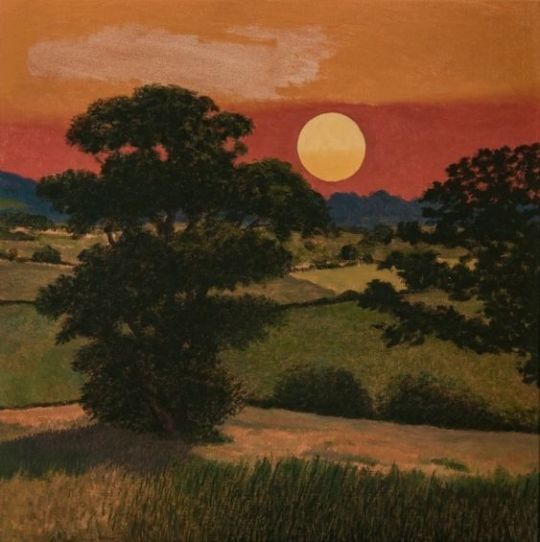
David Inshaw, “Quantocks Sunset”, 2018. Oil on canvas.
#david inshaw#quantocks sunset#2018#oil on canvas#oil painting#painting#art#landscape#quantocks#sunset#nature#orange#sky#green#field
24 notes
·
View notes
Photo

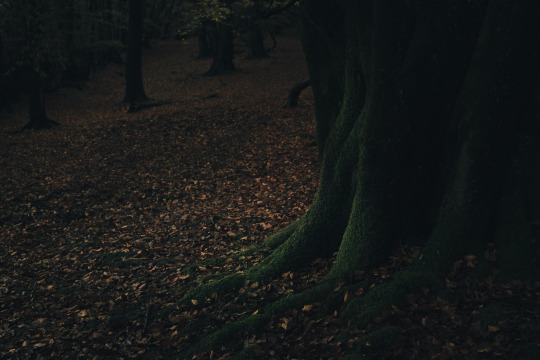
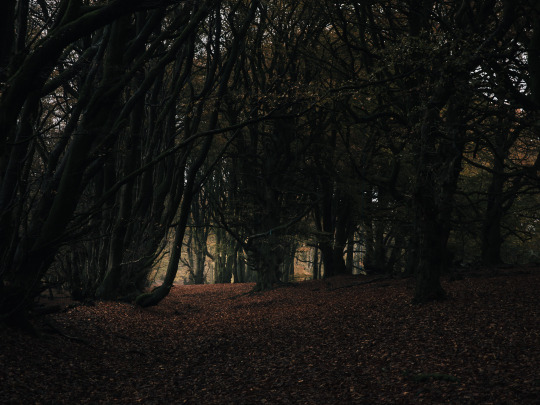

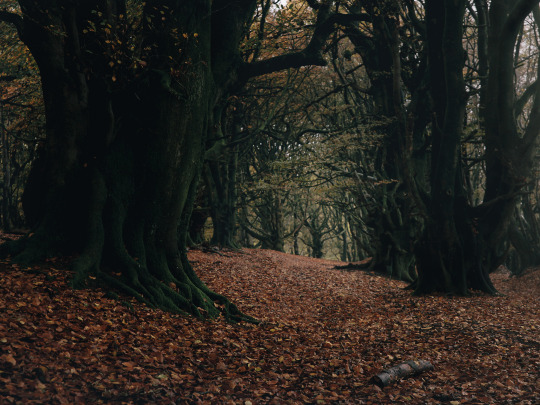
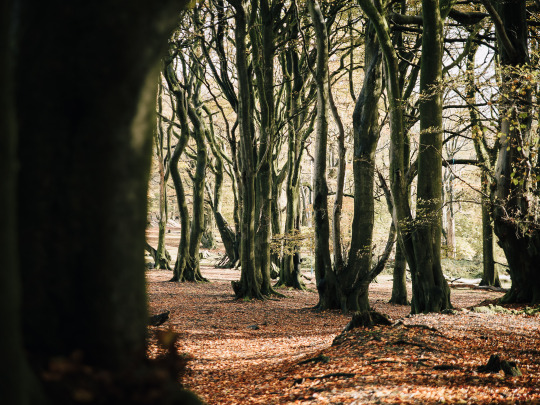
Another day in the Quantock Hills
Canon 5D MK II 24-70mm
Photographed by Freddie Ardley | website | instagram
15K notes
·
View notes
Text
instagram
I don't care much for instagram but this one is worth it
#uk#winter#autumn#spring#countryside#craftwork#hedgelaying#hedgerow#craftsmanship#england#quantocks#somerset#Instagram
1 note
·
View note
Text

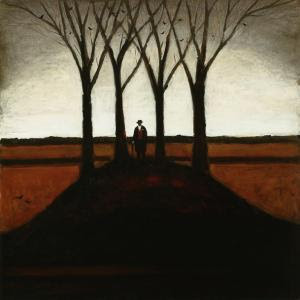
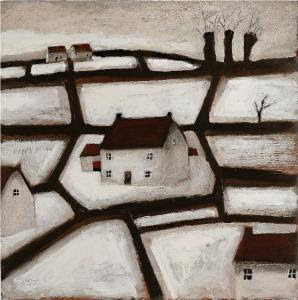
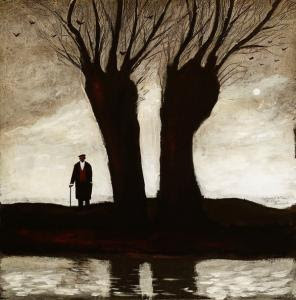
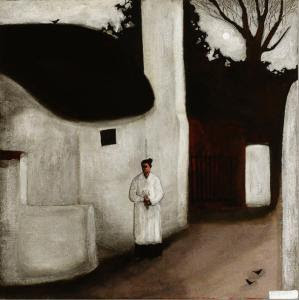

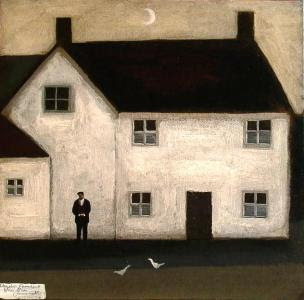
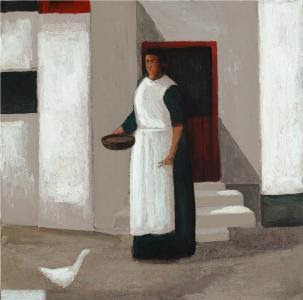
John Caple, British, b 1966.
John Caple’s family have been land workers in Mendip since the eighteenth century. He grew up in a close, rural community in which family stories and folk traditions were passed down through successive generations and which were to become the inspiration for his earliest paintings. Twenty-five years later, John Caple’s art remains woven into the landscape and history of Somerset as well as the rich tradition of poetry, folklore and magic that has held firm in Mendip.
These are paintings built on the collective memory of generations who shared a profound connection to the natural world. It was their voice which resonates through the poetry of Coleridge, who lived on the Quantock Hills, Wordsworth and then Shelley, Keats and Emily Dickinson and it was in their poetry that John Caple turned to find another way of reaching into the landscape, most recently in exhibitions that used Shelley’s visionary language as a starting point for his paintings.
https://www.jmlondon.com/.../103-john-caple-the-woodman.../
16 notes
·
View notes
Text
Dramatic, that
Playlist, AO3 | Part 1, Part 2, Part 3, Part 4
Hermione couldn’t make heads or tails of Malfoy. One moment he was making her work life a living nightmare, and then the next he stood behind her in the cafeteria line adding a bread roll here and a slice of chicken thigh there because she “didn’t eat enough.” What was he, her guardian? She hadn’t felt this amount of whiplash since, well, ever. He ran cold, then hot, then somewhere in between.
Take, for instance, when she’d been running late one morning. She must have turned off her alarm without realising it, giving herself hardly any time to splash water on her face and throw on some clothes before running through the Floo. She’s had to make do with a breath-freshening charm, and as for her hair, well, that was a lost cause. It had tumbled around her shoulders without restraint, the curls magnified after she’d fallen asleep with it wet after the shower.
She’d barely made it into the lift before the gate closed and met the now familiar eyes that so easily reflected his mood. Malfoy’s jaw had dropped, his body backing into the corner with both hands on the railings like he was afraid her hair was about to devour him whole. Rather than the expected snide comment about nests and creatures, he’d just stayed in position until they’d reached her floor.
Now here he was back to his unflappable self and questioning her methods of communication with the Centaurs–as if he had ever tried to secure a meeting with any in the past. The star-gazers were notoriously difficult to find unless one trespassed on their territory, and Hermione was not that stupid. At least, not anymore. She’d learned her lesson after Sixth Year.
“As I said before, the Quantock herd will not accept anything less than full autonomy of the indicated region and their inhabitants.”
“And as I have stated before, the Wizengamot lacks the authority to transfer ownership of lands under multiple owners, some of which are Muggle, to a single entity.” Malfoy countered. Wearing what might have been a Muggle suit if not for the large fold of the collar and how the coat trailed in the back, he almost looked like the perfect representation between the old and the new.
She wanted to grab him by his oversized lapels and shake hard enough to make teeth clack. He kept his hair shorter lately, so there was no slicked back style to send into disarray.
The remainder of the session passed quickly once it was clear she’d have to revise her proposal yet again. Her next attempt would need to be fully armoured and ready to batter down any opposition.
The very next morning, Hermione arrived at her desk to find a deep crimson flower in a small vase.
Rebecca’s lips curved upward when she noticed it in the middle of her delivery of messages and mail. “Dramatic, that.”
“Is it?” She’d thought the offering the exact opposite of dramatic. While, yes, the long train of blossoms reached upward as if asking for attention, the single stem seemed humble enough.
“It’s a gladiolus.”
At Hermione’s blank look, her assistant gestured along the length of the flower.
“Sometimes called ‘little sword’. I’m sure you can see why.”
Hermione nodded thoughtfully. “It’s striking. I take it to mean something equally cutting? A strike to the heart, perhaps?”
“Right in one!” Rebecca replied with a mock stab and wink. “Cut anyone down to size lately?”
“Not to anyone who’d send me flowers. Curses would be the more appropriate response.” Hermione scowled at the elaborate signature on one particular memo. It was just like Malfoy to sign off with a flair unbefitting the subject matter.
As the door clicked shut and blessed silence fell into place, she took deep pleasure in slashing the thick paper with a cutting spell, imagining it was the sender’s suit she was cutting to ribbons. The image of Draco Malfoy squawking in indignation as he stood shirtless before their peers and elders brought a smile to her face…until she recalled the breath of his shoulders and how well he’d filled out those same suits over the years.
She gave herself a vigorous shake and sat down. There was no time for that. She had a mountain of work and not enough hours in the day to entertain much else.
Still, Hermione took a short moment to appreciate the vase once more. It really was the perfect shade of green, reminiscent of seafoam. A thin line of gold curled around the slightly flared rim. She leaned closer in inspection. That wasn’t real gold was it?
Of course not. That would be dramatic.
The luminescent sheen repeatedly caught her eye throughout the day, and Hemione found herself frequently losing track of a given task as she stared at the ascending scarlet and its vessel. At the twelfth instance of distraction, she gave up.
There was one way to satisfy her curiosity.
Ever since Hermione had first started receiving questionable mail as far back as Fourth Year, she’d learned all manner of detection spells. The most common of them checked for harmful substances and would have already been conducted by Rebecca. However, Hermione had a couple of others up her sleeve she wanted to try.
The first attempt resulted in nothing new. The spell was supposed to pick up any remnants that might indicate the sender’s identity, but all it relayed was herself and Rebecca. She wasn’t sure if she was surprised or relieved at the lack of additional information. Whoever it was took great care to hide all traces of themselves. On one hand, Hermione hated not knowing the answer to her question, but, on the other hand, what would knowing do in this particular case? Would she feel obligated to reciprocate?
Her second attempt revealed the vase to be even more valuable than she’d suspected. Not only did real gold line the rim, but the glass had been manipulated by dragon fire. But how could that be? The tamest dragons she’d come across were those born and raised within sanctuaries, but even then, they weren’t ‘tame’ in the typical sense of the word. ‘Appeased’ would be more accurate.
Mysteries layered upon mysteries. She could chase the crumbs, perhaps ask Charlie Weasley if he knew of any glassmakers who might use dragon fire.
Or, she could accept the gift and continue her work knowing someone out there was in her corner, supporting her every step of the way. The Wizengamot and Draco Malfoy could sock her in the eye all they wanted; she’d simply bleed out the swelling and keep on punching.
Written for the @hp-flowers week 2 prompt: gladiolus
1107 wc
Cross-posted on Tumblr and AO3 (MarinaJune)
#harry potter fanfiction#harry potter flashfic#hpflowers2024#hp fest#dramione#draco malfoy x hermione granger#hermione granger#draco malfoy#dhr fanfiction
25 notes
·
View notes
Text


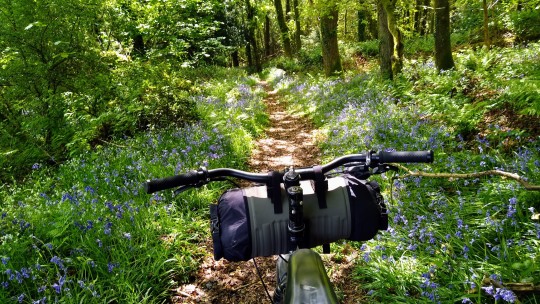
Broom and more bluebells in Somerset, May 2022. I'd headed round from Merthyr for a Quantocks and Exmoor overnighter in perfect conditions. In fact, the more I think about it the more I fancy a trip down there next month if the weather's right.
2 notes
·
View notes
Text
A ROCK BAND hailing from Caerphilly has teamed up with a Hollywood star, to fund the education for aspiring actors in an arts funding project.
Rockers Manic Street Preachers have teamed up with Hollywood star Michael Sheen to fund aspiring actors.
Mr Sheen said: "We’re in the midst of an arts emergency in Wales.
"Cuts are taking away tongues at the very moment our stories need to be shouted loudest."
The Manics and the Good Omens actor handed thousands of pounds to 11 aspiring actors over the past three years to fund their educations.
Sheen, 55, has pumped more than £250,000 of his own money into the arts funding project, which is also backed by the "Design for Life" rock band.
Sheen revealed that the funding - given as part of his Mab Gwalia organisation - will be renewed for a further three years after he hit out against government cuts to the arts.
The Damned United actor, said: "Mab Gwalia has emerged to provide support to give tomorrow’s talent a platform and pathway to develop their craft and tell our truth to the world. But the door is open to others with shared values who can contribute financially to the fund."
The Mab Gwalia Welsh drama student scholarship has so far handed up to £15,000 per academic year to aspiring actors and announced it will continue for a further three years.
One of those students, Hollie Saunders, said the funding helped her attend Royal Welsh College of Music and Drama.
Maesteg-based Holly, said: "The scholarship really made me feel so confident and just kind of hopeful, and without that scholarship, I wouldn't have been able to have that propeller to be like, I could do this too."
Sheen - who is known for his roles as former Prime Minister Tony Blair and soccer boss Brian Clough - has also helped fund a writing project and given bursaries to 11 writers from working-class and under-represented backgrounds.
One of those to benefit from the A Writing Chance scheme, Grace Quantock, of Newport, Gwent, praised Sheen for funding the initiative.
Ms Quantock, said: "Michael Sheen’s belief in Welsh working class voices changes lives. He knows art makes change, revolutionises lives, opens horizons and he is willing to step up to make that happen in his art and in his actions.
"His support changed my life through the A Writing Chance programme."
Outside the arts, Mab Gwalia has supported causes as vital as autism support, army veterans, mothers suffering post-natal depression, community skills hubs, foodbanks and more.
12 notes
·
View notes
Text

Hestercombe House - Somerset County - England 🏴
Hestercombe House is a historic country house in the parish of West Monkton in the Quantock Hills, near Taunton in Somerset, England. The house is a Grade II* listed building and the estate is Grade I listed on the English Heritage Register of Parks and Gardens of Special Historic Interest in England.
Originally built in the 16th century, the house was used as the headquarters of the British 8th Corps in the Second World War. Somerset County Council assumed ownership in 1951 and use the property as an administrative centre. Hestercombe House served as the Emergency Call Centre for the Somerset Area of Devon and Somerset Fire and Rescue Service until March 2012.
Hestercombe House is surrounded by gardens which have been restored to Gertrude Jekyll's original plans (1904–07) and have made it "one of the best Jekyll-Lutyens gardens open to the public on a regular basis", visited by approximately 70,000 people per year. The site also includes a 0.08 hectare (8,600 sq ft) biological Site of Special Scientific Interest in Somerset, notified in 2000. The site is used as a roost site by lesser horseshoe bats.
The house was enlarged and altered in the 18th century, but this work is no longer visible beneath the refronting and enlargement works carried out around 1875 for Edward Portman, 1st Viscount Portman, who had acquired it in 1873
The house today appears an assemblage of several architectural styles popular during the Victorian era. While the overall design and air could be described as Italianate, also present in the same entrance facade are examples of high Victorian Gothic, such as an Italianate seigneurial tower confused in design with a campanile tower. This tower complete with a glazed loggia is crowned by a French-style mansard roof with oversized chimneys masquerading as Renaissance ornament. The centrepiece of the same facade is a porte-cochère designed in a heavy neoclassical style.
The Gardens and grounds are open to the public.
8 notes
·
View notes
Text
My uncle once told me about a visit he made to an English friend of his, who was going through a divorce. “Right,” said this friend, “I’ve got a bottle of whiskey and the DVD of Tinker Tailor ... We’re going to stay up all night and watch the whole thing.”
Not the first choice, one might think, for someone in need of a bit of cheering up. Intricate, creepingly paced, almost violently understated, and set in an England sunk to Eastern Bloc levels of shabbiness and rainy suspicion, the 1979 BBC dramatization of John le Carré’s novel Tinker Tailor Soldier Spy is neither heartwarming nor especially reassuring about men and women. Something of a bummer, in fact.
But Tinker Tailor is not like other TV shows: It exists, now, at the level of an English myth. I was 11 years old, at a boarding school in Suffolk, England, when I first watched it. The cultured murmurings of the spies; the offstage brutality; the layers upon layers of duplicity; the extraordinary fact that the broken MI6 agent Jim Prideaux goes into hiding as a teacher at a prep school just like mine, another cold and noisy factory of double-natured Englishmen—it all implanted itself in my brain like an engram. Somewhere in MI6, somewhere near the very top, there is a traitor—a mole, in the argot of le Carré’s spyworld. He’s been there for years, decades even; the damage is profound; the damage is already done; and only by going backwards, into the files, into the circuits of memory, only by reversing appearances and turning suppositions inside out, can le Carré’s anti- or un-hero, George Smiley, find his way to the truth. This is why my uncle’s suffering friend needed Tinker Tailor Soldier Spy. Under the veneer of one country, another country altogether.
Le Carré, who died on Saturday at the age of 89, wrote many novels, on many themes, but for me Tinker Tailor Soldier Spy will always be his greatest work. He wasn’t just a medicine man of the English imagination; he was a stylist, too. Perfectly weighted descriptive sentences, with just a flicker of dour lyricism. Open the book at random: “The rain rolled like gun-smoke down the brown combes of the Quantocks, then raced across the empty cricket fields into the sandstone of the crumbling facades.” That’s Thursgood’s Academy, where Prideaux teaches. Rain ... gun ... empty ... crumbling facades. It’s all in there. Decline and fall. Weave old England’s winding-sheet. I can hear the lazy cawing of the rooks around the school grounds, those ancient, sardonic daubs of sound in a rheumy English landscape—I hear it and I become a little Manchurian candidate. I’m transported: a visitant, a spy in my own life.
13 notes
·
View notes
Text

Peter Biegel (1913-1987) Studies of the Quantock Staghounds, 1957 Pencil and Watercolor on Paper Private Collection
2 notes
·
View notes
Text

“If your body is the site of the trauma, the site of repeated suffering and traumas. We perhaps can’t stand to be there.” - Grace Quantock, Author of Living Well with Chronic Illness.
Listen to Grace’s episode here: https://linktr.ee/alivewithchronicillness
2 notes
·
View notes
Text
Verdwenen paradijzen
“Vlinders en bloemen, de donkerrode aarde van de Quantocks en witgepleisterde huisjes in het bos. Dagen zonder einde, met geen ander doel dan met wijd open ogen door de velden naar zee lopen en door de getijdenpoelen waden. Waarom kan mijn film niet terugkeren naar dat paradijs.”, schreef Derek Jarman toen hij 49 was. Drie jaar later stierf hij.
“Terwijl ik dit schrijf komen al die ervaringen weer bij me boven, veertig jaar en meer nadien – het rustgevende gedruis van de golven, en de zilte geur – jongensjaren, het schelpen graven, blootsvoets, met opgerolde broekspijpen – al oogstend de kreek langs – de geur van de zeggevelden ....”, schreef Walt Whitman honderd jaar voor Jarman.
Het verdwenen kinderparadijs is een krachtige literaire bron en wordt ten onrechte als een uitgekauwd onderwerp gezien. Wie zijn of haar schouders ophaalt voor dat verlies is een cynicus of heeft te veel pijn opgedaan als kind.
Gisteren zat ik in de benedentuin, onder het lichtgroene dak van een grote beuk. Ik zag dat er in het gras gewroet was. Reeën, volgens eigenaar Craig, ze zoeken de laatste beukenootjes. Ik hoorde de Maulde stromen, en zachter, bijna als geritsel, het stroompje dat kronkelend achter mij loopt. Het was daar dat ik eerder voor het eerst van mijn leven een onooglijk geel bloemetje zag, de 'goudveil'. De hemel was stralend blauw, Mont Loron stond pront in mijn blik. Mijn borduurwerk liet ik zakken. Ik was voor even in een paradijselijk moment beland. “Het was. Het zal nooit meer zijn. Herinner.”, schrijft Paul Auster tot slot in 'Het spinsel van de eenzaamheid. Twaalf dagen geleden stierf hij. Ik zal hem herinneren.
Ik kwam op dat goed bewaarde kinderparadijs omdat ik achterin de benedentuin een pol met dotterbloemen vond. Ze horen niet hier maar duizend kilometer noordelijker. Dotterbloemen vormden met zwanenbloemen, pinksterbloemen, en lisdodden mijn bloemenwereld als Indisch kind in het Friese weidelandschap. Ik hoefde maar de straat uit te lopen en ik kon ze al tegenkomen. Dat duurde niet lang, want de nieuwe tijd stond met heipalen en hijskranen te dringen.
Walt Whitman groeide op op Long Island. Hij schrijft over iets waar hij zielsveel van hield: het rapen van meeuweneieren. Onlangs kreeg een 71-jarige Brit zijn derde gevangenisstraf voor het stelen van enkele duizenden eieren uit nesten van zeldzame vogels. Hij had het als jongen van zijn vader geleerd, en kon er niet mee stoppen. Zijn verzameling oogt prachtig. Op onze kwetsbaar geworden planeet en in ons schuldig natuurbewustzijn is het rapen van meeuweneieren en nachtzwaluweieren volstrekt taboe. Het is een ander soort dood van dat kinderparadijs. Ooit vond ik samen met Baukje Fokkema, op ons negende, een kievitsei in de weilanden van Wolvega. We waren euforisch. Het was, het zal nooit meer zijn, herinner.
2 notes
·
View notes
Link
Today’s poem
2 notes
·
View notes
Text
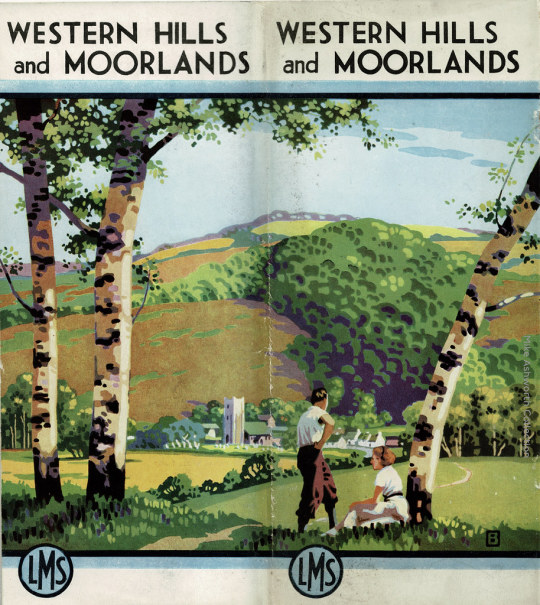
Western Hills and Moorlands : publicity folder : London Midland & Scottish Railway : 1938 : cover by John Bee by mikeyashworth One of the many standard folding brochures issued by Britain's main line railways in the inter-war period; this is the London Midland & Scottish Railway's brochure for "Western Hills and Moorlands" relating to the Cotswolds, Quantocks, Dartmoor and Exmoor. The area may seem unusual territory for the LMS but I suspect they promoted this given their long main line south from Birmingham to Bristol that had come to the railway at Grouping in 1923 thanks to the Midland Railway. It gives details of locations and destinations for holiday makers. The cover is by "B" - artist John Bee who was commissioned for several railway posters and publicity material particularly in post-war, British Railways times. The artist has produced an idyliic rural scene.
0 notes